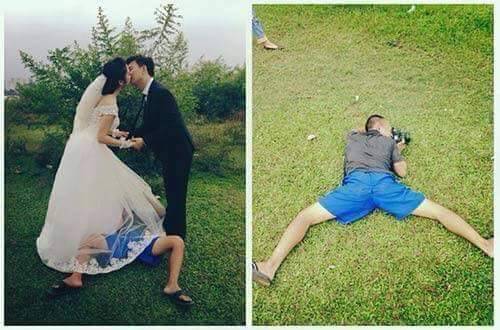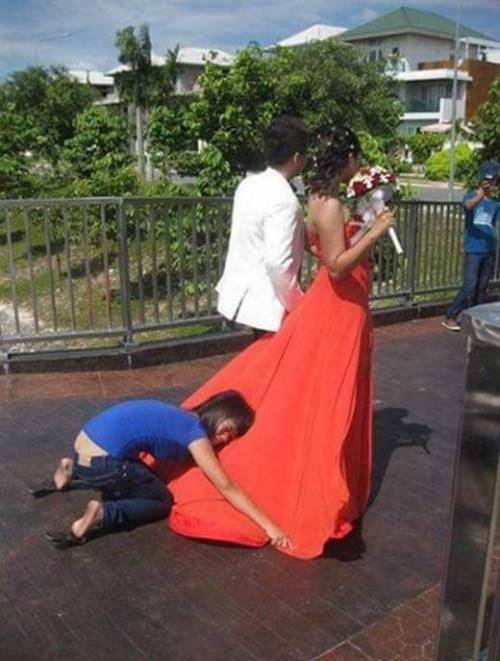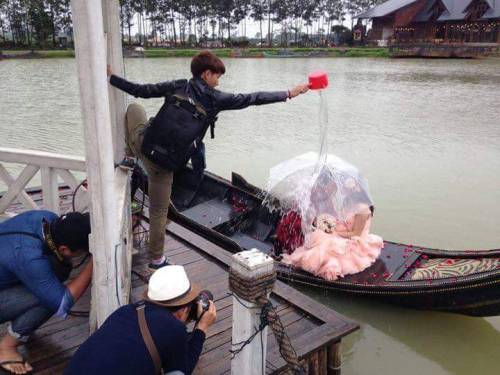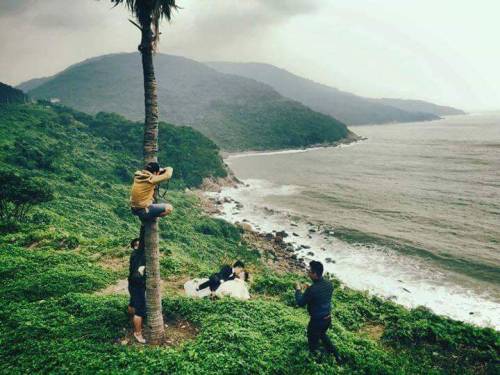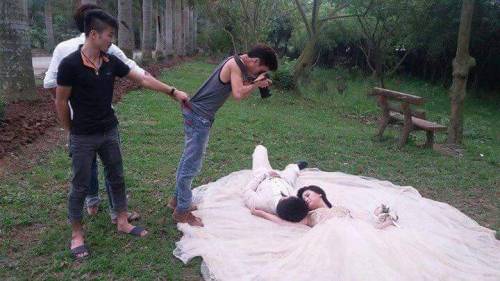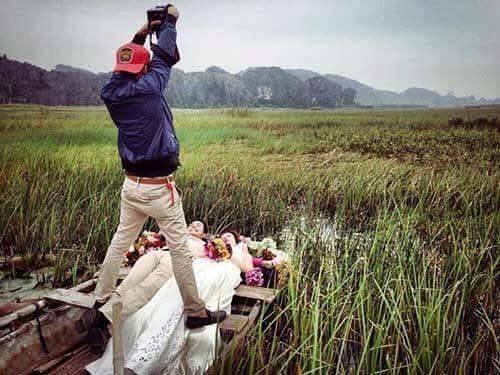Dallas Stars @ Vancouver Canucks || 16 March 2017

Dallas Stars @ Vancouver Canucks || 16 March 2017
Tyler Seguin nearly loses his head during warm-up.
More Posts from Allisoncheri and Others
A little girl in my 4th grade class came up to me after recess and said, “I got married at recess!” and I said “Oh? I didn’t know anyone was ordained under the age of twelve.” and she asked me what ordained meant and I explained and then she said “Oh, well, no, my wife and I were married by the slide, but we’ll be happy together anyway.”
So apparently on school playgrounds, slides are already legalizing same-sex marriage.



Hidden Portraits: Nikola Tesla
Nikola Tesla was an inventor, engineer, physicist and futurist. He arrived in the U.S. in 1884 and quickly catapulted his career by working with Thomas Edison, creating more than 700 patents and making major breakthroughs in modern alternating current (AC) electricity.
He’s featured in the Art with Watson series, Hidden Portraits. 15 artists teamed up with Watson to discover and illuminate the unknown essence of seven of history’s greatest thinkers using data.
What Watson thinks: Watson’s analysis of Tesla’s works revealed a new side of the famed inventor – as an artist at heart.
About the artwork: The Artist Inside was inspired by Tesla’s conflicted, dual personas: the scientist and the artist. The mirrored cube represents Tesla’s mind, with the inner electric grid representing his fame as a well-known scientist. The generative art that come alive inside the cube speaks to Tesla’s lesser-known artistic side, uncovered with Watson.
Explore Tesla’s Hidden Portrait ->
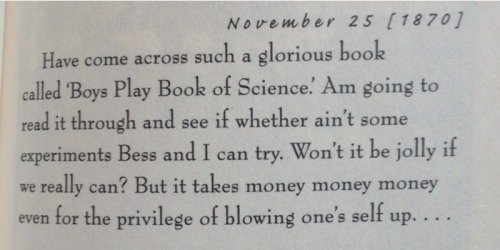
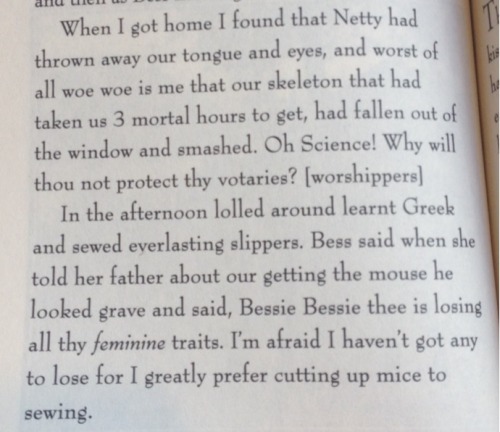
this is from a real diary by a 13-year-old girl in 1870. teenage girls are awesome and they’ve always been that way.

Tyler Hoechlin @ emeraldcitycomicon 2015, Seattle
So, our physics teacher has the strange idea of motivating his students by letting each of us present a physical phenomenal we find interesting to our classmates in a 5-minutes-presentation. And now I need something that is interesting for everyone - even people that usually don't care for physics -, but has interesting facts for someone who's interested in it, too (preferably with an easy experiment). You don't happen to have any ideas, do you?
First of all, your professor is awesome for taking the time to do this. Of the top of my mind, the best one I have is Chladni figures.

Basically take a flat metal plate, fix it at the center and spray some fine sand particles on it.
Using a violin bow, gently excite any edge of the plate to magically witness these beautiful normal mode patterns ( known as Chladni patterns/figures ) forming on the plate.

Also notice that by pinching the plate at different points, the pattern obtained changes.

There is a whole lot of physics that goes behind such a simple phenomenon and I dare say we understand it completely. There are lots of questions on these figures that we have no answer for!
Hope this helps with your presentation. Have a good one!
Gif source video: Steve Mould

On August 2, 1971, Apollo 15 astronaut Jim Irwin is working near the lunar module. The Moon is small compared to some celestial objects, but it’s seemingly vast compared to that speck in the distance. Photo by Dave Scott.
(NASA)
So apparently last year the National Park Service in the US dropped an over 1200 page study of LGBTQ American History as part of their Who We Are program which includes studies on African-American history, Latino history, and Indigenous history.
Like. This is awesome. But also it feels very surreal that maybe one of the most comprehensive examinations of LGBTQ history in America (it covers sports! art! race! historical sites! health! cities!) was just casually done by the parks service.
-
 seggyt91 reblogged this · 2 years ago
seggyt91 reblogged this · 2 years ago -
 thepynner liked this · 2 years ago
thepynner liked this · 2 years ago -
 bethelnie-blog liked this · 2 years ago
bethelnie-blog liked this · 2 years ago -
 lucyayerdis11 liked this · 2 years ago
lucyayerdis11 liked this · 2 years ago -
 seggyt91 reblogged this · 2 years ago
seggyt91 reblogged this · 2 years ago -
 katrenastark liked this · 5 years ago
katrenastark liked this · 5 years ago -
 sofisabe liked this · 5 years ago
sofisabe liked this · 5 years ago -
 breathesleepeathockey liked this · 5 years ago
breathesleepeathockey liked this · 5 years ago -
 alocalband liked this · 5 years ago
alocalband liked this · 5 years ago -
 vintagebeauty1496 liked this · 5 years ago
vintagebeauty1496 liked this · 5 years ago -
 thoughtfultriumphstudent2825leah liked this · 5 years ago
thoughtfultriumphstudent2825leah liked this · 5 years ago -
 livelovereadwrite liked this · 5 years ago
livelovereadwrite liked this · 5 years ago -
 myhockeyworld87 reblogged this · 5 years ago
myhockeyworld87 reblogged this · 5 years ago -
 myhockeyworld87 liked this · 5 years ago
myhockeyworld87 liked this · 5 years ago -
 luvmetommo liked this · 5 years ago
luvmetommo liked this · 5 years ago -
 seggyt91 reblogged this · 5 years ago
seggyt91 reblogged this · 5 years ago -
 arieltwvdtohamflash liked this · 5 years ago
arieltwvdtohamflash liked this · 5 years ago -
 hockeyandstuff91 liked this · 6 years ago
hockeyandstuff91 liked this · 6 years ago -
 ambolton liked this · 6 years ago
ambolton liked this · 6 years ago -
 jennad-13 liked this · 6 years ago
jennad-13 liked this · 6 years ago -
 incomingdeathwarrent liked this · 7 years ago
incomingdeathwarrent liked this · 7 years ago -
 lifetimeofadventue liked this · 7 years ago
lifetimeofadventue liked this · 7 years ago -
 take-it-easyyyyy liked this · 7 years ago
take-it-easyyyyy liked this · 7 years ago -
 lostgirrl14 liked this · 8 years ago
lostgirrl14 liked this · 8 years ago -
 devochka15 liked this · 8 years ago
devochka15 liked this · 8 years ago -
 tonyaward-winner-princezuko reblogged this · 8 years ago
tonyaward-winner-princezuko reblogged this · 8 years ago -
 skaytee liked this · 8 years ago
skaytee liked this · 8 years ago -
 varelses reblogged this · 8 years ago
varelses reblogged this · 8 years ago -
 varelses liked this · 8 years ago
varelses liked this · 8 years ago -
 weedbowl liked this · 8 years ago
weedbowl liked this · 8 years ago -
 daydreamingalittledream reblogged this · 8 years ago
daydreamingalittledream reblogged this · 8 years ago -
 bespokemanners liked this · 8 years ago
bespokemanners liked this · 8 years ago -
 madichele08 reblogged this · 8 years ago
madichele08 reblogged this · 8 years ago -
 madichele08 liked this · 8 years ago
madichele08 liked this · 8 years ago -
 juststuff9876 liked this · 8 years ago
juststuff9876 liked this · 8 years ago -
 hughesstars liked this · 8 years ago
hughesstars liked this · 8 years ago -
 27gravess liked this · 8 years ago
27gravess liked this · 8 years ago -
 hey-brandy reblogged this · 8 years ago
hey-brandy reblogged this · 8 years ago -
 josty reblogged this · 8 years ago
josty reblogged this · 8 years ago -
 kaitkelly62301 liked this · 8 years ago
kaitkelly62301 liked this · 8 years ago -
 yorkshirekiwi reblogged this · 8 years ago
yorkshirekiwi reblogged this · 8 years ago -
 queercedricdiggory liked this · 8 years ago
queercedricdiggory liked this · 8 years ago -
 ananas1308 liked this · 8 years ago
ananas1308 liked this · 8 years ago

